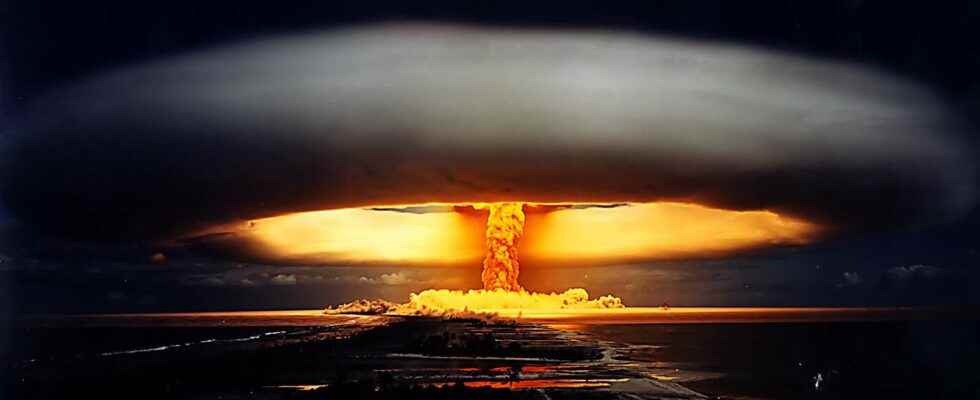Would the simultaneous explosion of the 17,000 nuclear warheads available in the world sign the end of Humanity? In any case, it would lead to devastating consequences for the environment and health, plunging the planet into a nuclear winter for several years.
You will also be interested
More than 17,000 nuclear weapons are held by nine countries worldwide, according to the International Campaign to Abolish Nuclear Weapons (ICAN) global listing. ” The United States and Russia keep about 2,000 of their nuclear weapons on high alert, in other words ready to be used within minutes.alerts the organization. A single nuclear warhead, if detonated over a major city, could kill millions and its effects would linger for decades. »
An explosion with a power of 3 billion tons of TNT
According to Ican, it would take 1,000 nuclear warheads, or 5% of the world’s reserves, to make the planet uninhabitable. The science channel YouTube Kurzgesagt – In a Nutshell calculated that three is enough nuclear bombs to completely destroy a city of more than 100,000 inhabitants, which means that one could largely annihilate half of humanity with the arsenal available. If all the world’s nuclear bombs exploded in the same place (for example in the middle of the Amazon rainforest), there would be an explosion releasing an energy of 3 billion tons of TNT, the equivalent of 15 eruptions like that of Krakatoa in 1883. This would produce a fireball 50 kilometers in diameter that would ignite everything within a 250 kilometer radius of the explosion. One mushroom cloud of 50 kilometers in height would project into theatmosphere billions of particles of ash and radioactive dust, which would be disseminated throughout the planet according to the wind.
If all the nuclear bombs exploded at the same time. © Kurzgesagt, YouTube
A nuclear winter would cause a new ice age
According to Ican, 150 million tons of smoke would be emitted in the stratospherewhich would result in a 45% reduction in precipitation in the world and the cooling 7 to 8°C above average ground temperature, higher than during the Ice Age. Radioactive particles would cause a severe and prolonged reduction in ozone layerwith an increase in ultraviolet radiation and skin canceras well as a destruction of marine life.
Cancer and soil contamination
In a densely populated city, a Hiroshima-type bomb would cause up to 870,000 deaths in the first few weeks. ” If 500 warheads hit major US and Russian cities, 100 million people would die in the first half hour, and tens of millions would be fatally injured “, assures the Ican. Most survivors would die within months irradiation and D’epidemics. But the effects could persist even longer term: it is estimated that the risk of thyroid cancer and blood in exposed children continues to increase even 10 years later and that there are even effects hereditary. The radioactive fallout would also contaminate plants and animals which would become unfit for consumption for decades.
Let us be reassured, such a nuclear explosion is highly improbable: no attack has been launched since the Second World War despite the extreme tensions during the Cold War and the impressive nuclear arsenal accumulated by the various countries.
Interested in what you just read?
